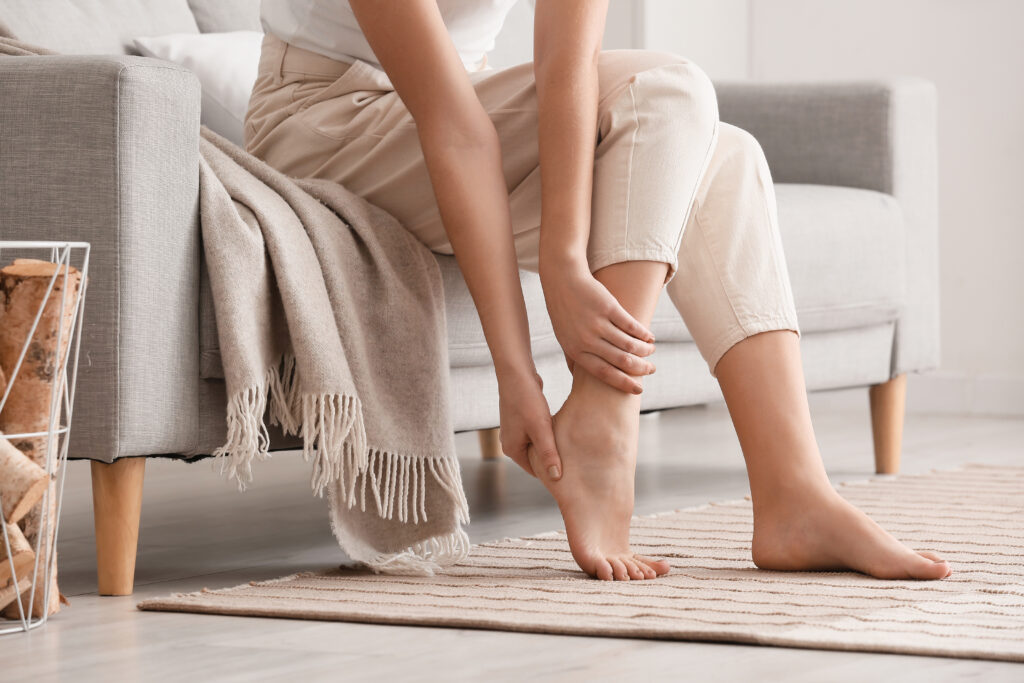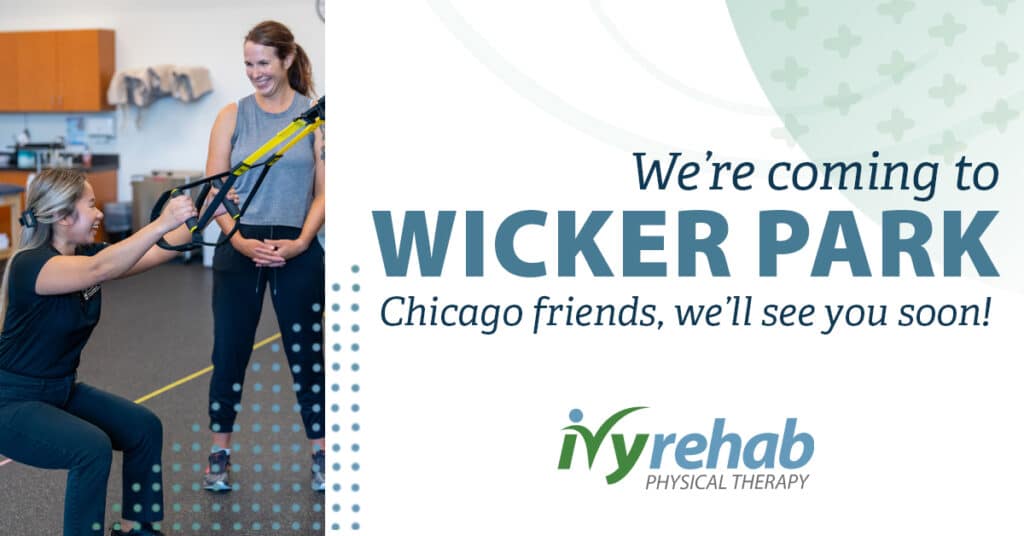Practiced internationally for nearly a century, the Schroth Method is a safe and effective treatment option for adolescent and adult scoliosis. Most often diagnosed in adolescence, scoliosis is a sideways, abnormal curvature of the spine that continues to elude physicians and researchers as to why. Discover how physical therapy for scoliosis can help improve posture and alignment, strengthen and stabilize the spine, and alleviate pain.
Scoliosis Explained
Scoliosis changes a person’s overall spinal alignment, leading to muscle imbalances, poor posture, and sometimes pain. Scoliosis symptoms are often subtle during the early stages, making them easy to overlook. The condition typically develops during growth spurts before and during puberty, but it can happen at any age. Catching scoliosis early gives patients time to correct the scoliosis curve before it becomes severe.
The good news is most cases are mild, progress slowly, and do not cause major deformity – meaning observation, bracing, and rehabilitation physical therapy are considered before surgical treatment. Some doctors do recommend surgery in severe cases, but there are also effective non-surgical treatments that are used, including the Schroth Method. This multidisciplinary, nonsurgical approach incorporates scoliosis specific exercises tailored to each patient’s spine scoliosis curvature.
The goal is to return the curved spine to a more natural position using a three-dimensional approach to correct spinal and muscle imbalances. Targeted exercises help de-rotate, elongate, and stabilize the spine to address the scoliosis curve from all angles, as well as promote postural awareness.
Types of Scoliosis
Scoliosis is categorized based on its underlying cause. While some cases have no known origin, others are linked to congenital conditions, neuromuscular disorders, or age-related degeneration. Understanding the type of scoliosis can help guide treatment options, including physical therapy and bracing.
- Idiopathic Scoliosis: Idiopathic scoliosis is the most common form, accounting for nearly 80% of all scoliosis cases. It has no identifiable cause and is typically diagnosed during growth spurts in childhood or adolescence. The most common subtype is Adolescent Idiopathic Scoliosis (AIS), which develops between ages 10-18. AIS is more progressive in females, and in some cases, treatment such as bracing or physical therapy is recommended to prevent further curvature. Idiopathic scoliosis can also develop in younger children (infantile and juvenile idiopathic scoliosis) or even in adulthood as a continuation of undiagnosed AIS.
- Congenital Scoliosis: Congenital scoliosis is present at birth and results from improper spinal development in the womb. The spine may have missing, fused, or abnormally shaped vertebrae, leading to curvature as the child grows. The severity and progression of congenital scoliosis vary depending on the malformation, and early detection is crucial. Treatment may involve monitoring, bracing, physical therapy, or in some cases, surgery to correct the spinal structure.
- Neuromuscular Scoliosis: Neuromuscular scoliosis develops due to underlying neurological or muscular conditions that affect the spine’s ability to maintain proper alignment. It is commonly associated with disorders such as cerebral palsy, muscular dystrophy, spina bifida, and spinal cord injuries. The lack of muscle control and spinal stability often leads to a more severe and rapidly progressing curvature. Treatment typically focuses on managing posture, mobility, and comfort through physical therapy, bracing, and in severe cases, surgical intervention.
- Adult Scoliosis: As the name implies, this type of scoliosis is typically diagnosed at the age of 18 and up. Adult scoliosis falls into three categories:
- Scoliosis patients who were diagnosed and treated as adolescents who have reached skeletal maturity
- Adults who did not receive treatment when they were younger
- Adults with some degeneration of the spinal discs, arthritis or osteoporosis
By understanding these types of scoliosis, healthcare providers can tailor treatment approaches to each patient’s specific needs, helping improve mobility, posture, and overall spinal health.
Signs and Symptoms of Scoliosis
Scoliosis causes the spine to move to the side and turn. Doctors can detect the condition through a physical examination, an X-ray, spinal radiograph, CT scan or MRI. Patients are diagnosed when the curvature of the spine measures 10 degrees or greater on an X-ray. A curve greater than 25 to 30 degrees is considered significant, and curves exceeding 45 to 50 are considered severe.
Abnormal posture
Studies have found genetics may play a role in scoliosis. About 30 percent of AIS patients, or three in 10, have some family history, according to the Scoliosis Research Society.
Other conditions that can increase the odds include a birth defect, such as muscular dystrophy or cerebral palsy, infections, trauma during childhood, and unusually rapid growth spurts.
The earliest visible signs of scoliosis can be seen in one’s posture. It is one of the symptoms, but not the cause. Signs can include:
- Uneven shoulder height
- Uneven hip height
- An uneven waistline
- An awareness that the 2 sides of the body don’t line up
- Chronic pain in the areas surrounding the spine including the shoulder, pelvis, and hip
- Pain with specific movement or activity. Uneven alignment of the ribs when bending forward
Back pain
Initially, scoliosis doesn’t limit movement or cause pain until the curve becomes more pronounced. Pain is more common in adults with scoliosis. The abnormal spinal curvature starts to put pressure on the nerves and sometimes the entire spinal cord. Symptoms include lower back pain, weakness, numbness, or chronic pain in the joints and extremities.
Fatigue
Some people feel fatigued after long periods of sitting or standing. The muscles around the spine have to work harder to keep the body aligned and balanced. In severe instances, the curvature can put pressure on the chest cavity and restrict breathing, leading to chronic fatigue.
What is the Schroth Method?
The Schroth Method is credited to German physiotherapist Katharina Schrothwho had scoliosis herself and didn’t have success with bracing. She developed her own breathing technique and scoliosis exercises to manage her scoliosis and balance her muscle strength.
The method was introduced in 1921 and gained popularity as a recognized scoliosis exercise treatment option. Katharina and her daughter, Christa, opened a successful clinic in Germany. Christa became a physical therapist and dedicated her career to treating scoliosis patients and training therapists in the Schroth exercise method.
Schroth exercise therapy can help correct muscular imbalances, improve postural awareness, and enhance quality of life. The scoliosis specific exercises and corrective breathing exercises help develop and strengthen the inner muscles of the rib cage, change the shape of the upper trunk, and correct spinal deformities. Schroth scoliosis exercise therapy can prevent further curve progressionin pediatric patients because their spines are still relatively flexible, but it also has benefits for adult Schroth patients.
Schroth physical therapy exercises are individualized for each patient but include three important components:
- Restore muscular symmetry and spinal position with pelvic corrections and stabilizing isometric exercises
- Rotational breathing technique to help correct spinal rotation and increase lung capacity
- Teaches you to be aware of your posture during daily living
How Physical Therapy and the Schroth Method Offer Nonsurgical Options for Scoliosis
A scoliosis diagnosis doesn’t mean spinal fusion surgery is inevitable. For mild cases or those detected early, doctors often recommend regular monitoring, specialized bracing for children, and scoliosis-focused physical therapy to help manage or correct the condition. While surgery may be necessary for severe or rapidly progressing cases, physical therapy can play a crucial role in pain relief, stabilizing the spine, and slowing scoliosis progression.
Physical therapists guide patients through targeted exercises designed to improve posture, spinal alignment, and muscle balance. Using props such as therapy balls, poles, and Schroth Method exercise bars, they help patients correct spinal imbalances in various positions—standing, sitting, or lying down. Therapists also incorporate mirrors to help patients visualize their corrections and reinforce proper alignment at home.At Ivy Rehab, physical therapists receive specialized training and certifications in orthopedic physical therapy and scoliosis-specific treatment programs. Scoliosis treatments include the Schroth System Scoliosis Specific Exercises, the Gyrotonic Expansion System Scoliosis Program, and the Stott Pilates Rehabilitation Treatment Program, ensuring comprehensive, expert care tailored to each patient’s needs.
Benefits of Physical Therapy for Scoliosis
Therapy outcomes are customized to each scoliosis patient based on the curve patterns and severity, as well as the patient’s function and mobility, but include:
- Prevent scoliosis from advancing
- Reduce or stabilize the spinal curve
- Improve postural alignment and range of motion
- Improve core stability and strength
- Easier breathing and increased lung capacity
- Better pelvic alignment
- Manual therapy to mobilize stiff body parts and reduce pain
- Strengthen muscles surrounding the spine
- Address muscle imbalance
- Teach activities of daily living
- Increase muscle strength and endurance
- Retraining to restore spinal alignment and mobility
- Promote self-management and understanding of the spine
- Family and patient education
- Developing a home program of therapeutic exercise and care
Schroth physical therapy can be used to treat all stages of scoliosis and all ages of patients. Schroth therapy is beneficial as complementary care or to help rehab the spine and surrounding muscles after surgery. The best plan of care, including frequency and duration of Schroth therapy sessions, is developed based on your individual evaluation.
The most successful outcomes require buy-in from Schroth patients and a long-term commitment to follow the Schroth guidelines and exercises. Continuing a home therapeutic exercise program is a lifelong commitment and necessary to maintain postural improvements.
Pursuing Treatment for Scoliosis
Whether you are worried about your own spine or your child’s, have received a scoliosis diagnosis, or need rehabilitation physical therapy after spinal surgery, Ivy Rehab’s specially trained orthopedic physical therapists can perform a thorough evaluation and help develop a customized therapy plan. Find a clinic in your area and don’t delay in treating scoliosis!
Article Reviewed by Holly Lookabaugh-Deur, PT, DSc, GCS, CEEAA
Holly Lookabaugh-Deur, PT, DSc, GCS, CEEAA is a practicing physical therapist and a partner and Director of Clinical Services at Ivy Rehab Network. Deur is board certified as a geriatric clinical specialist and certified exercise expert for aging adults with more than 35 years of clinical experience. She is certified as an aquatic and oncology rehabilitation specialist and serves as adjunct faculty at Central Michigan University and Grand Valley State University.
Sources:
- Verywell Health. Physical Therapy for Scoliosis. https://www.verywellhealth.com/physical-therapy-for-scoliosis-4797898
- Health Central. Physical Therapy for Scoliosis Management. https://www.healthcentral.com/condition/scoliosis/physical-therapy-for-scoliosis



